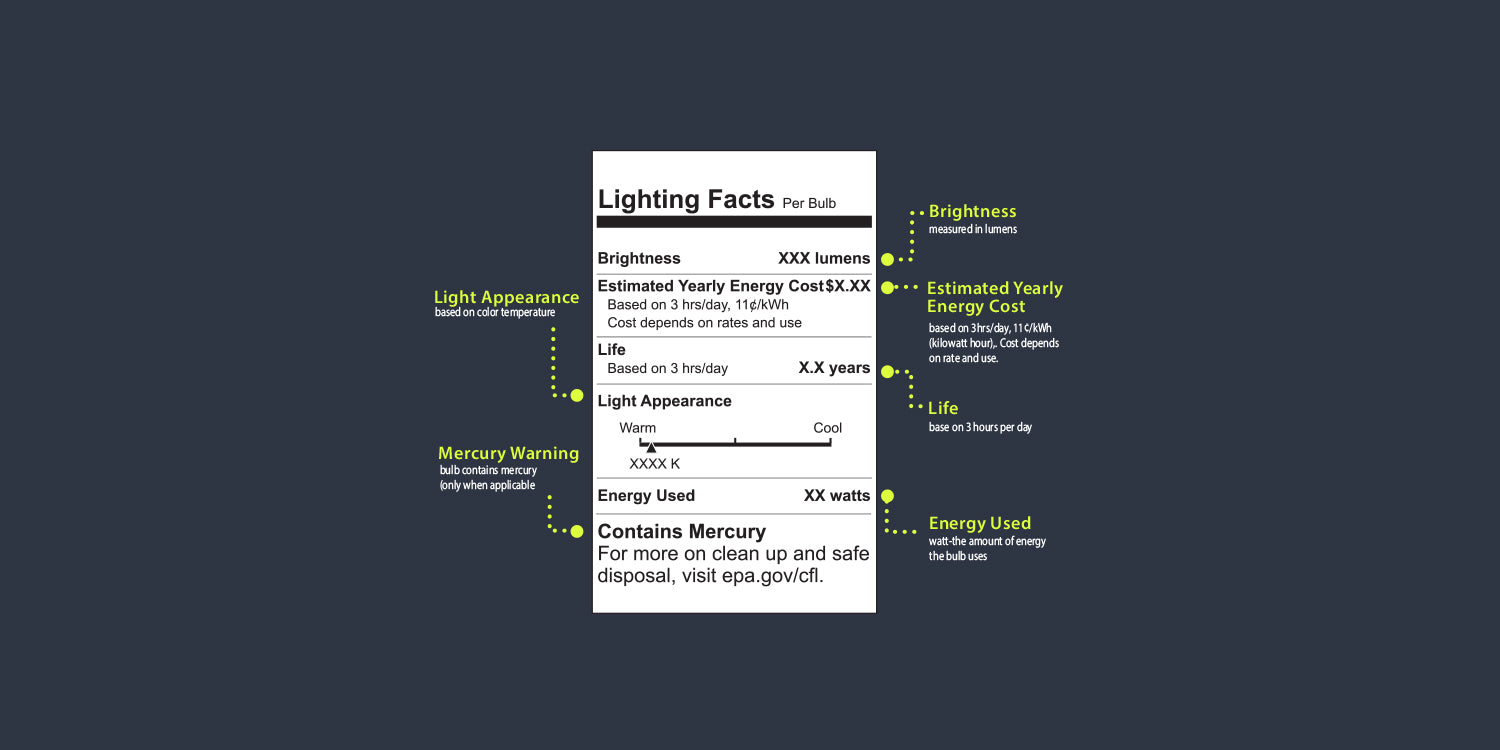The Lighting Facts label is a significant step towards helping consumers make informed decisions about energy-efficient lighting. Similar to the Nutrition Facts label on food packages, it's mandated by the Federal Trade Commission. Its purpose is to give shoppers all the necessary information to choose the most energy-efficient bulbs for their needs. To make things even simpler, a new, consumer-friendly energy usage label will soon be required on most light bulbs. This label will make it easier for you to select the right energy-efficient bulbs.
Light Appearance (Light Color)
LED (Light Emitting Diode) bulbs are more energy-efficient and last longer than traditional
The color of light is commonly assessed through its color temperature, measured in Kelvin (K). Lower color temperatures are associated with "warmer" light, while higher color temperatures indicate a "cooler" light. For example, warm yellow home lights typically have a color temperature of around 2700K, while colder white lights can range upwards of 5000K.
Energy Use
The wattage of a light bulb indicates its energy consumption, but for more energy-efficient options like LEDs and other low-energy bulbs, a "watt equivalent" is provided instead. This equivalent wattage denotes the brightness of the bulb compared to a traditional incandescent bulb of the same wattage. For instance, a 60-watt equivalent LED bulb may only consume 10 watts of power, making it significantly more energy-efficient than a traditional 60-watt incandescent bulb.
Lumens
Determining a bulb's brightness is now based on lumens rather than wattage. Lumens represent the amount of light emitted, with higher lumens indicating greater brightness. To translate a light bulb's brightness from watts to lumens, refer to the following chart:
- 375 lumens equivalent to a 25-watt incandescent bulb.
- 600 lumens equivalent to a 40-watt incandescent bulb.
- 900 lumens equivalent to a 60-watt incandescent bulb.
- 1125 lumens equivalent to a 75-watt incandescent bulb.
Bulb Life
Many light bulbs indicate their lifespan on the label in years, while some use hours. LED light bulbs, in particular, don't usually burn out like traditional bulbs. Instead, their LED diodes gradually diminish in brightness over time. A bulb is generally considered useful until its brightness decreases by around 30 percent.
Mercury-Free
LED light bulbs are completely free of mercury, whereas CFL bulbs contain a small amount of mercury. However, there's no need for excessive worry. The level of mercury present in a standard CFL bulb poses minimal to negligible health risks if handled and disposed of according to the Environmental Protection Agency's guidelines.
Notice – LED Blue Light Warning
Certain LED manufacturers include warnings on their labels about the potential risks of exposure to blue light. Research indicates that exposure to any light during nighttime hours can contribute to sleep disturbances. For home lighting, it's generally recommended to opt for warm bulbs with a light color temperature around 2700 kelvins, as these emit less blue light compared to cooler bulbs with a color temperature above 3000K.
CRI – Color Rendering Index
CRI (Color Rendering Index) measures how accurately colors appear under a light source compared to natural sunlight. A higher CRI indicates better color accuracy, making it easier to distinguish between subtle color differences, such as distinguishing between black and navy socks. CRI values range from 0 to 100, with higher values indicating truer colors under natural light conditions.
Omnidirectional
An LED light bulb that emits light in all directions is referred to as omnidirectional. A-type bulbs of this nature are particularly suitable for providing illumination across wide areas.
It’s in the Numbers - PAR or BR Bulbs
PARs and BRs bulbs are commonly employed in recessed lighting fixtures or floodlights and are often labeled with a numerical designation such as 30 or 64. To determine the bulb's diameter in inches, simply divide this number by 8. This information is essential when selecting bulbs to ensure compatibility with your fixtures.






